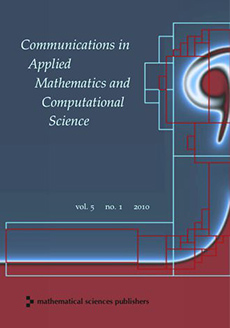Abstract
We convert the information-rich measurements of parallel and phased-array MRI into noisier data that a corresponding single-coil scanner could have taken. Specifically, we replace the responses from multiple receivers with a linear combination that emulates the response from only a single, aggregate receiver, replete with the low signal-to-noise ratio and phase problems of any single one of the original receivers (combining several receivers is necessary, however, since the original receivers usually have limited spatial sensitivity). This enables experimentation in the simpler context of a single-coil scanner prior to development of algorithms for the full complexity of multiple receiver coils.
Citation
Mark Tygert. Jure Zbontar. "Simulating single-coil MRI from the responses of multiple coils." Commun. Appl. Math. Comput. Sci. 15 (2) 115 - 127, 2020. https://doi.org/10.2140/camcos.2020.15.1
Information





